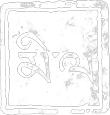For a little while now, I’ve had the ability to see when I’m not acting according to my principles.
The Time of Opposites
/ / Cambridge, Massachusetts
For a little while now, I’ve had the ability to see when I’m not acting according to my principles. When I can feel anger welling up within me, I can also stand apart and watch myself respond to that answer – as if witness mind has detached from day-to-day existence. Unfortunately, I don’t yet possess the skill to respond in the ways this witness mind knows are correct – with patience and equanimity.
In the same vein, I’m beginning to realize a dual nature to my Buddhist thinking. I know that my path lies between realizing my nature as a human being and understanding the emptiness of that nature. There are Buddhist teachings that suggest meditating on the ugliness and instability of this body, of meditating on the image of my own body rotting and falling apart. These teachings attempt to convince us to find no value in this temporary body, a body that will soon be a lifeless log decaying into the soil.
But absent a literal understanding of the Buddhist mythology, which for me is a source of psychological symbolism more than actual religious beings, and absent a full appreciation of the doctrine of reincarnation (which, again, for me is a psychological concept), I feel the need to accept certain conclusions:
1) This lifetime is the only one in which this particular arrangement of life occurs – the only one that produces the aggregate of experiences, actions and physicality that I call ‘me.’
2) What I call ‘me’ dies and is reborn every moment. What continues through each ‘reincarnation’ of ‘me’ are my samskaras, my attachments, and my karma
2a) Karma is the psychological side of action. When we act and react in certain ways, we enable certain physiological changes that make those actions and reactions more likely in the future.
3) Enlightenment for ‘me’ occurs only within this lifetime. There are no multiple lifetimes during which I might gradually accrue good karma.
4) What I call ‘me’ exists wholly within this physical form. I have no individual soul that exists separate from the body. When this form dissimilates, I dissimilate. The continuity inherent in the structure of this body and this mind dissipates upon death.
5) As a result, it makes sense to me to seek a tantric path. The tantric traditions deal with the union of opposing forces. On one side of Buddhist thought, renunciation of the body is paramount, because attachment to this impermanent form breeds suffering. On the other side, we cannot escape this nature; we are born in human form, with the benefits and limitations of human form.
5a) We require certain basic elements for survival. However, we tend to overestimate our requirements.
5b) Sexual energy is likely one of the most powerful forces within the human body.
Its influence is strong, and renunciation of sexuality must be taken as seriously as abandonment to it. A sexually active Buddhist should continually examine his or her motivations in order to understand the nature of this energy: how it creates attachment, how it consumes us, and how it can be integrated in a stronger existence.
5c) A healthy ‘mind’ requires a healthy ‘body.’
This is the reason I’ve begun yoga classes. As a physical practice it offers numerous benefits; as a spiritual practice it informs and improves my Buddhist practice. Because this being (me) is based so heavily on this physical form, a more aligned and healthy physical form seems more likely to be peaceful and happy, if not more conducive to enlightenment.
6) Our view of the nature of things depends entirely on where we sit.
My recent studies of the chakras, of the energy bodies, of Tibetan ‘biology’ and other views of the body seem to indicate that reality exists on a level we cannot directly perceive. Thus we overlay our interpretations like schematics on transparent sheets of plastic over reality. Our view depends on the knowledge that comes before. We build our paradigm. Thus there may be many functional understandings of reality, despite apparent contradictions that arise occasionally between them. For example, the location of Hindu and Tibetan chakras in the body maps roughly to Western medicine’s endocrine glands and major nerve clusters.
6a) The conclusion I draw here is this: the indicator of truth is not in how new information fits with current understanding of reality but in how well it works in practice.
In a nutshell, this is my philosophical view on my Buddhism. It most likely doesn’t agree with a lot of ‘orthodox’ Buddhist views, but on the other hand I’ve been unable to find out where it conflicts with the spirit of the Buddha’s teachings.
There’s more than enough here to keep me busy, though. I’ve come this far in reaching these conclusions, but understanding them or practicing them well? That may take a lifetime!
